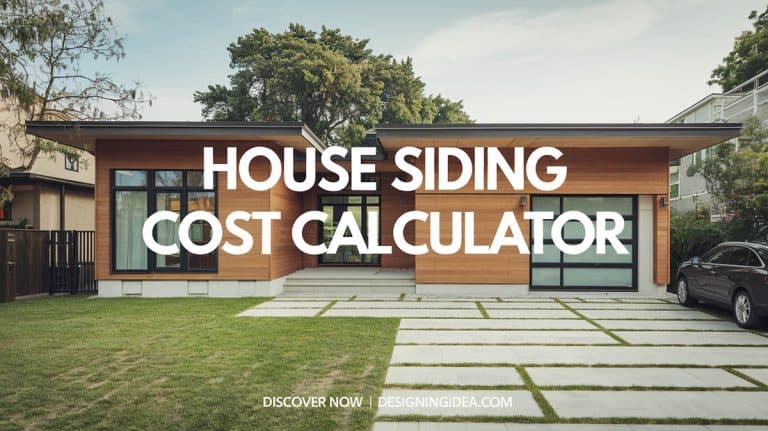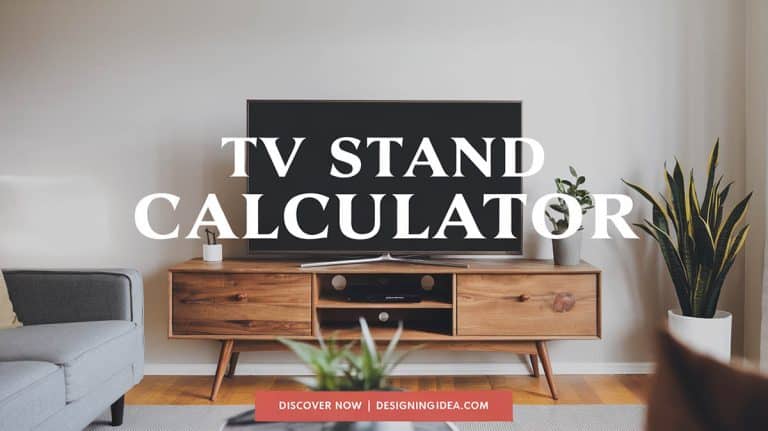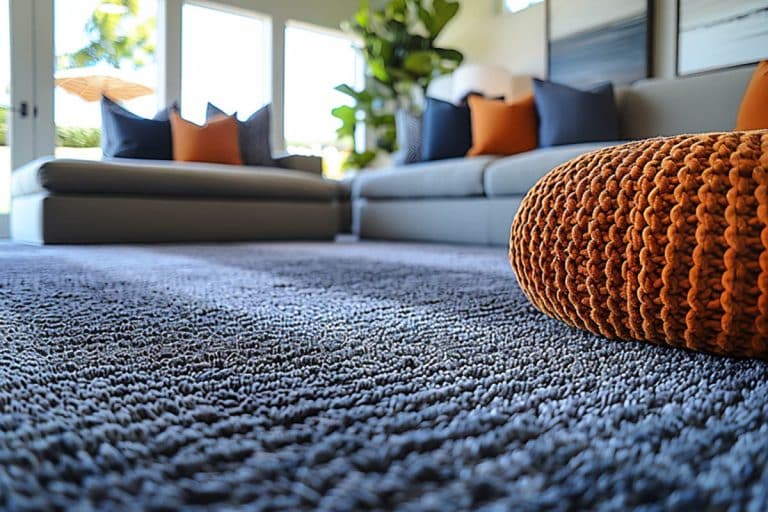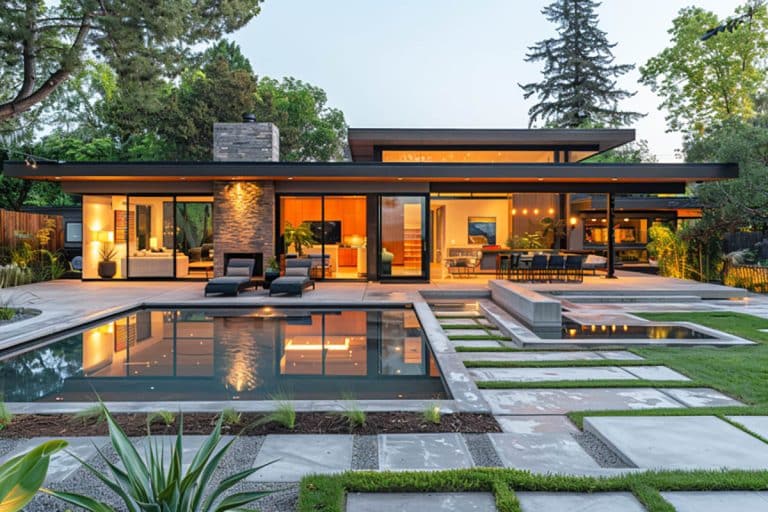Gallery Wall Layout Generator For Perfect Frame Placement
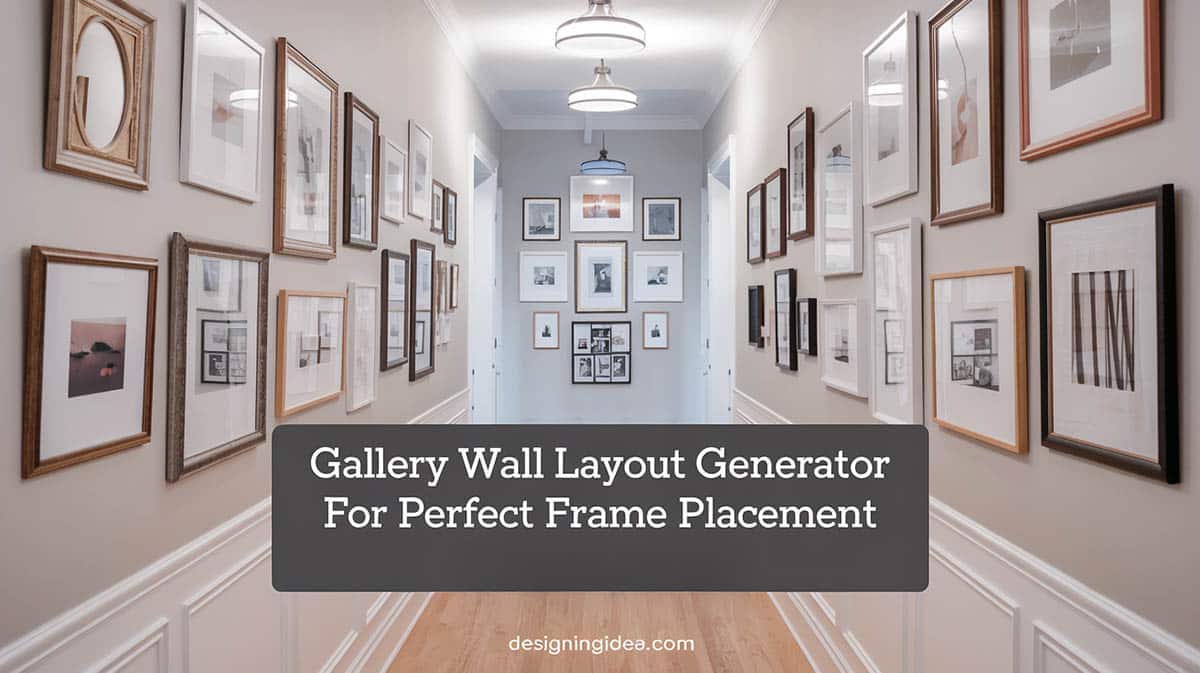
Welcome to our gallery wall layout generator to help you create and visualize your picture arrangements. Enter your picture frame sizes below to get started creating your own design.
Gallery Wall Layout Calculator
Gallery Wall Layout Preview
How To Use The Gallery Layout Generator
Get the wall measurements. Start by measuring your wall’s dimensions for both the width and height in inches. For reference, the most common wall widths are:
- Small walls: 96-120 inches (8-10 feet)
- Large feature walls: 144-192 inches (12-16 feet)
Standard ceiling heights are:
- Traditional: 96 inches (8 feet)
- Modern homes: 108 inches (9 feet)
- Luxury spaces: 120 inches (10 feet)
Add levels to your wall. A “level” is a horizontal section of your gallery wall and multiple levels may be added for complex or layered layouts.
Add frames to each level. Input the width and height of each frame in inches. By defining custom dimensions for frames, you can create dynamic and visually interesting arrangements.
Set spacing between frames. State the distance between frames (in inches) you want. The usual range is 2-4 inches, but it all depends on your style.
Preview your layout. The calculator provides a scaled preview of the gallery wall based on the input and shows how frames will be arranged across all levels. Continue to improve your design until you are satisfied with it by modifying the input to see what look you like.
Tips for Creating a Gallery Picture Wall
Have a focal point. To create your gallery picture wall its good to start with a focal point. This means starting out with one large or standout frame for the center and arrange smaller ones around it. The focal point should be placed at eye level (with the center of a frame between 57 and 60″” above the floor).
Symmetry versus Asymmetry. For a symmetrical layout the picture frames are spaced evenly and are grid or row-aligned rather than more haphazard. This arrangement is more recommended for formal settings. For an asymmetrical layout you can mix sizes and orientations of frames. This gives a more casual feel.
Proportional-balanced wall space. It’s recommended to use 60 to 75% of the wall’s width for the gallery width. For example, for a 120″ wall, you would want a gallery width of 72″ to 90″ for best results. In addition, leave at least 6″ to 12″ of space between the bottom of the lowest frame and any furniture.
Test before hanging. Before hammering or drilling any holes in the wall you may want to get an idea of how everything will look. A good way to do this is by laying out the frames on the floor to see you the design looks.
Tips for Hanging Your Frames
Measuring. For measuring and deciding on your spacing use a tape measure, level, and a pencil to mark the exact frame positions on the wall. To keep things looking cohesive use the same spacing for frames throughout your design.
Hanging height. For most walls, center the gallery at 57″ to 60″ from the floor for the best viewing level. Make sure to keep the lowest frame 6″ to 12″ above any furniture pieces.
Layering with levels. For a layered look use multiple levels to create visual interest and depth. Here are a few layering tips:
- For the upper level use taller frames.
- For the middle section you’ll want to have your centerpiece frame.
- For the lower level use smaller sized frames.
Frame variety. For more visual interest you can mix horizontal, vertical, and square frames using the placement techniques above. It’s a good idea to stay with one consistent theme or color palette to keep things looking stylish.
Using a wall theme. Some popular ideas for picture gallery walls are to use only family photos, exciting travel pictures, or artwork in a single gallery. A single unifying style, for example, black-and-white photography will look stylish and decorative. You can also consider changing the pictures by season to add some freshness to your decor throughout the year.
Balancing visual weight. If you have several larger and heavier pieces, distribute them evenly across the gallery. Avoid clustering any larger frames together. Watch out for overcrowding the wall and use the calculator to get a balanced layout. Don’t forget about your proportions. Frames that are too small or large may look out of place next to others of different sizes. You can get away with using larger frames if you have a bigger space.
Using the gallery wall layout generator can help give you a jump-start to planing you picture arrangement. Let us know what you think about the tool or if you have any recommended best tips for hanging pictures for your gallery walls.



